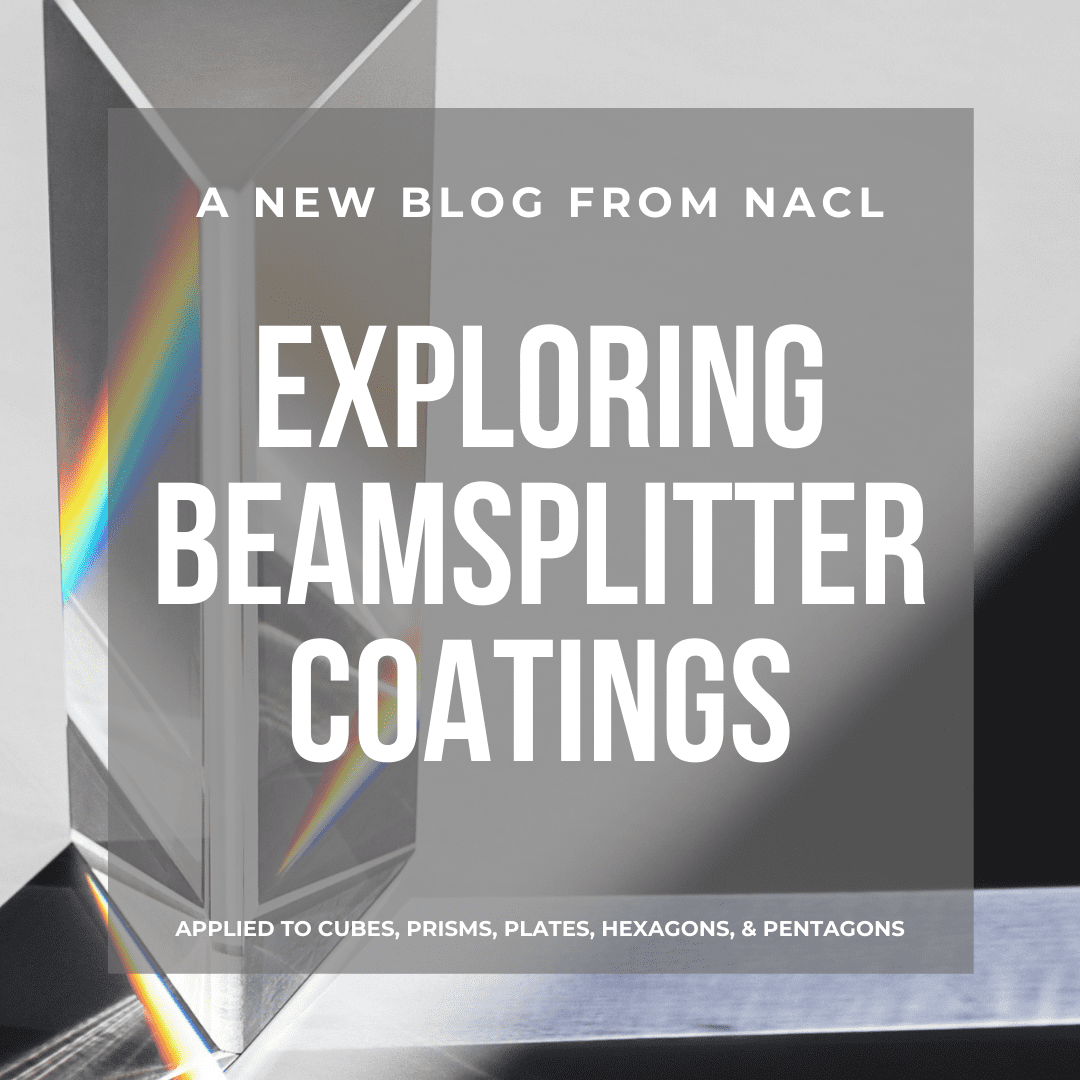What is a beamsplitter coating?
Beamsplitter coatings can be deposited in a variety of different ways and perform in an array of different substrate scenarios. Beamsplitters can be applied to cubes, prisms, plates, hexagons, and pentagons. They can be polarizing, non -polarizing, or both, they can also come in narrowband or broadband varieties. If that isn’t enough to confuse you, these coatings can be comprised of dielectrics or metals, and can be designed to have an escape index of air, optical cement, or even optically contacted (a bonding process without epoxy). This blog will help you determine the specifications that will meet your projects requirements, and help you deliver your product on time.
A beamsplitter coating divides a single beam of light or ray into two separate beams. The most typical variety of beamsplitter coating is a 50/50 split or some other percentage of transmission and reflectance. These coatings can also recombine and control multiple beam paths, dependent upon the application and polarization requirements. Beamsplitters are vital to many optical applications, including Augmented Reality systems, fiber optic communications, and interferometry.
Beamsplitters and Polarization
Beamsplitters are normally specified and measured in randomly polarized light, however they can be non-polarizing. Non-polarizing beasmplitters are sometimes called out in drawings with the acronym “NPBS” whereas polarizing beamsplitters are sometimes referred to on drawings by the acronym “PBS”. In determining which sort of polarization requirements you will need, it is additionally important to know how you would like the polarized light to perform in terms of “S” and “P”.
Optical Specifications for Beamsplitters
The key specifications you’ll need to share with your coating provider are; the wavelength range or operating band, which type of light polarization you’re concerned with, and the physical size of your optic for throughput and tooling consideration. One additional specification that is important to determine is the angle of incidence in which your beamsplitter coating will be utilized. Many beasmplitters are designed at 45 degrees, however each application is unique so this can’t always be assumed. Any additional information you can provide about the application you’ll be suing the optical system in can help your coating provider further define your requirements, so your project is successful.
The spatial configuration can be important for applications. Some require the output ports to be at 0° and 90° relative to the input beam (possibly without any beam offset of the transmitted beam), while others require two parallel outputs or some other configuration.
We’re Here to Help
We’d love to chat more about your program and see if our coating solutions are a fit for your beamsplitter application. Please give us a call or send us an email so we can help you with your decision as to which process is most beneficial for your program.






